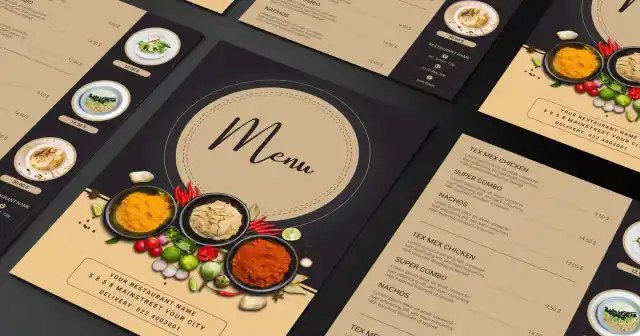In the fiercely competitive food industry, maximizing profitability is a constant challenge. One powerful strategy that can help food franchises achieve this goal is menu engineering. It involves carefully analyzing, designing, and optimizing the menu to drive sales and increase profits.
In this article, we will explore the various aspects of menu engineering, including analyzing menu performance, menu design and layout, price optimization, menu innovation and rotation, and effective marketing and promotion strategies.
KEY TAKEAWAYS
- Conduct data-driven menu analysis to identify top performers and areas for improvement.
- Utilize psychological principles in menu design to guide customers toward profitable choices.
- Implement strategic pricing techniques like anchoring, bundling, and upselling.
- Keep your menu fresh with innovative new offerings and limited-time promotions.
Analyzing Menu Performance
Effective menu engineering starts with a thorough analysis of your menu’s performance. Data-driven decisions are crucial in this process. Begin by evaluating the profitability of each menu item, considering factors like food costs, pricing strategies, and contribution margins. Identify your high and low performers to understand what’s driving sales and what needs improvement.
Additionally, conduct a sales mix analysis to pinpoint your best-selling and underperforming items. This will give you insights into customer preferences and trends, allowing you to make informed decisions about menu updates and promotions.
For instance, if you’re opening a delicatessen business, understanding which sandwiches or salads are most popular can help you strategize your offerings. Likewise, you may also want to conduct customer surveys to gather valuable information and make data-driven decisions.
Menu Design and Layout
The design and layout of your menu play a crucial role in influencing customer choices and driving sales. Understanding the psychology behind menu design can help you strategically present your offerings.
Start by considering visual hierarchy and eye-tracking principles. Use colors, fonts, and images to draw attention to your most profitable items. Organize your menu in a logical flow, categorizing items and guiding customers’ attention through strategic placement and grouping. For instance, in a coffee and donut shop franchise, you might group all the beverage options together and highlight the higher-margin specialty drinks.
Descriptive menu writing is also essential. Craft appealing and descriptive item names that highlight unique selling points. Use sensory language to make your offerings irresistible. By implementing these techniques, you can subtly nudge customers toward your most profitable menu choices.
Price Optimization
Pricing is a delicate balance in menu engineering. Implementing effective pricing strategies can significantly impact your profitability.
Consider cost-plus pricing, value-based pricing, and competitor analysis to establish optimal pricing for your menu items. Additionally, leverage menu pricing techniques like anchoring and decoy pricing, bundling and combo offers, and upselling and cross-selling to maximize revenue.
However, it’s important to monitor and adjust prices regularly. Track price sensitivity and respond to market changes and trends. Regularly analyze your menu’s performance and make data-driven pricing decisions to ensure you’re maximizing profits while still providing value to your customers.
Menu Innovation and Rotation
Keeping your menu fresh and exciting is essential for maintaining customer engagement and capitalizing on food trends. Regularly introducing new menu items can help you stay ahead of the competition and cater to evolving customer preferences.
Develop new menu items by conducting market research, analyzing food trends, and considering ingredient sourcing and cost implications. Test new offerings and gather customer feedback to refine and improve them before adding them to your permanent menu.
Additionally, implement menu rotation and limited-time offerings. Seasonal and promotional menu items create a sense of urgency and exclusivity, driving customers to visit more frequently. Effective menu rotation also helps you manage inventory and supply chain more efficiently, reducing waste and ensuring consistent quality.
Marketing and Promotion
Even the most well-engineered menu will fall flat without effective marketing and promotion strategies. Start by optimizing your in-store marketing and merchandising efforts. Design eye-catching menu boards and displays, utilize table tents and promotional materials, and train your staff to upsell and promote your most profitable offerings.
In today’s digital age, it’s also crucial to leverage digital and social media marketing channels. Optimize your website and online menu for search engines and user experience. Develop social media campaigns, collaborate with influencers, and leverage email and loyalty program promotions to reach your target audience.
Finally, explore co-branding and cross-promotion opportunities, as well as influencer and celebrity endorsements. These collaborations can help you tap into new markets and increase brand awareness, driving more customers through your doors.
Closing Thoughts
Menu engineering is a powerful tool for maximizing profitability in your food franchise. By analyzing menu performance, optimizing menu design and layout, implementing effective pricing strategies, introducing new menu items and rotating offerings, and leveraging marketing and promotion tactics, you can create a menu that not only delights your customers but also drives profitability. Remember, continuous monitoring and adaptation are key to long-term success in this ever-evolving industry.

